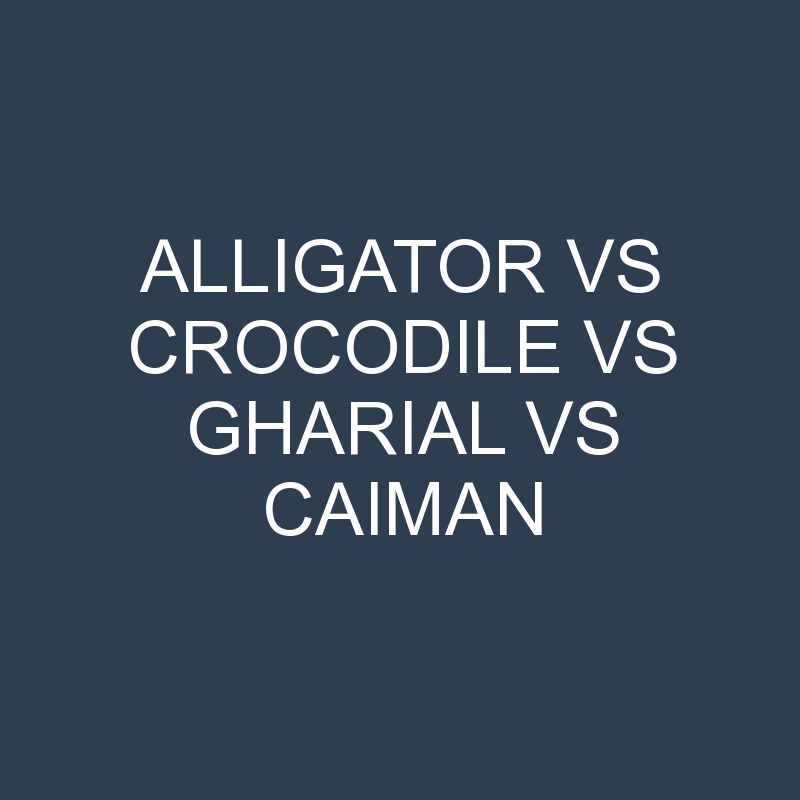Are they alligators? Are they crocodiles? Are they dinosaurs? Well, gharials gavials (Gavialis gangeticus) are none of these things.Many people are unaware about the visible differences between crocodiles, alligators and gharial they use any of the three words for any large-toothed aquatic reptile. Despite some similarities, all three reptiles do not look the same nor do they behave the same.
Gharial or Gavial
The gharial (Gavialis gangeticus), also known as the gavial are rare animals found only in the India and nepal. They are easy to identify because they have a long thin muzzle (embossed portion above the nose). There is swelling of a bulb on the tip of the snout of the male crocodile. They are mainly aquatic and their mobility on land is limited. They feed on fish and amphibians.Osteolaemus tetraspis or Gharials are nocturnal in contrast to other crocodiles.
They are basically fish-eating species. They are dark or light olive in color and at around 20 years of age, their dorsal surface becomes dark brown, black in color. Their number has been reduced to a few hundreds and they are fast disappearing. The adult male crocodile has a growth at the tip of the snout called ‘ghara or pitcher’ as it looks like a pitcher.
Gharial lived in all the major river systems of the Indian subcontinent, from the Irrawaddy River (Myanmar) in the east to the Indus River in the west, but their population is now limited to only 2% compared to the former area. They like to live in flowing rivers, where they bake in the sand of their banks and build nests in them. They usually cohabit in cold weather.
Crocodile
They are mainly freshwater species found in lakes, rivers. They prefer to live in slow flowing, shallow water sources as compared to fast flowing, deep water. They eat fish, other reptiles, and small mammals (e.g. – monkeys). Large adult crocodiles can also occasionally hunt large mammals, including 225 kg of sambar deer, and domestic water buffalo weighing up to 450 kg. At night they usually hunt on the ground. Crocodiles are also considered dangerous for humans.
8 Visible Differences between Alligator and Crocodile:
Muzzle size – The crocodile’s snout is edgy and (V) shaped while the alligator’s snout is wide and (U) shaped.
Location – Alligators are found only in the US and parts of China, while crocodiles can be found worldwide.
Habitat – Crocodiles prefer to live in saltwater (sea, ocean) while alligators live in freshwater.
Teeth – Crocodiles show their toothy smile even after closing their mouths. It is as if it is glowing thirty-two. The reason is that the fourth tooth on each side of their lower jaw climbs over their upper lip. The alligator’s upper jaw is larger than the lower, so when they close their mouths, all their teeth are hidden.
Size – A fully grown crocodile (average length: 19 feet) will probably be several feet longer than an adult alligator (average length: 11 feet).
Colour – Crocodile skin is usually light coloured, olive green or brown in colour. Alligator has dark, dark-brown skin.
Speed – On land and in water, crocodiles are slower than alligators. Both have an average speed of 30 km / h in water and 14 km / h on land. But because the alligator is smaller than a crocodile, it can get faster than a crocodile.
Behavior – Alligators seem less aggressive than crocodiles. When approached by humans, he will usually try to run away and move to the nearest water source. On the other hand, crocodiles are more bad-tempered and can attack humans even if not pierced
